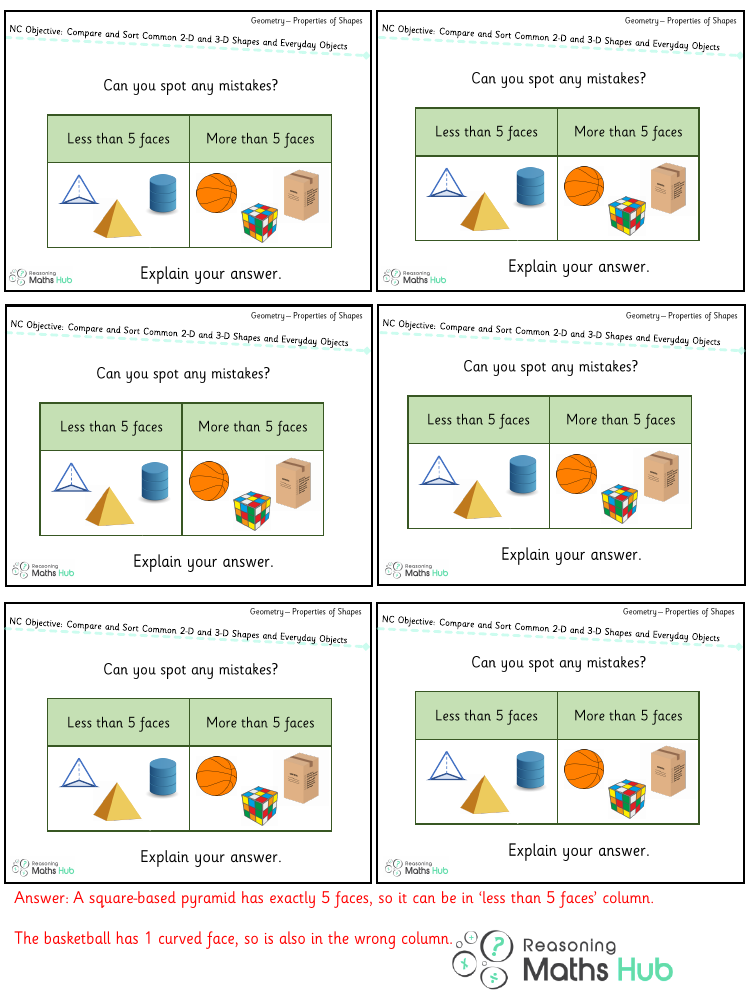Compare and sort common 2d and 3d shapes and everyday objects 3 - Reasoning

Maths Resource Description
The activity of comparing and sorting common 2D and 3D shapes, as well as everyday objects, involves a deeper level of reasoning that goes beyond simple recognition. In this task, students are encouraged to examine the properties of various shapes, such as the number of sides, vertices, and faces, as well as considering symmetry, angles, and dimensions. By engaging in this process, they learn to categorise shapes not just by their appearance but by their geometric attributes. This critical thinking exercise helps students to organise shapes into groups and subgroups, and to understand the relationships between different shapes, such as which are polygons, which are polyhedra, and which shapes can be found in everyday objects.
When sorting shapes, students may also compare them by their properties in space, distinguishing between 2D shapes that are flat and have area, like circles, squares, and triangles, and 3D shapes that occupy space and have volume, like spheres, cubes, and pyramids. Everyday objects can be used to illustrate these concepts, making the learning experience more tangible. For example, a cereal box can be compared to a rectangular prism, while a football can be related to a sphere. Through reasoning and discussion, students can sort these items based on their geometric properties and develop a more nuanced understanding of shapes in both mathematical and real-world contexts.
